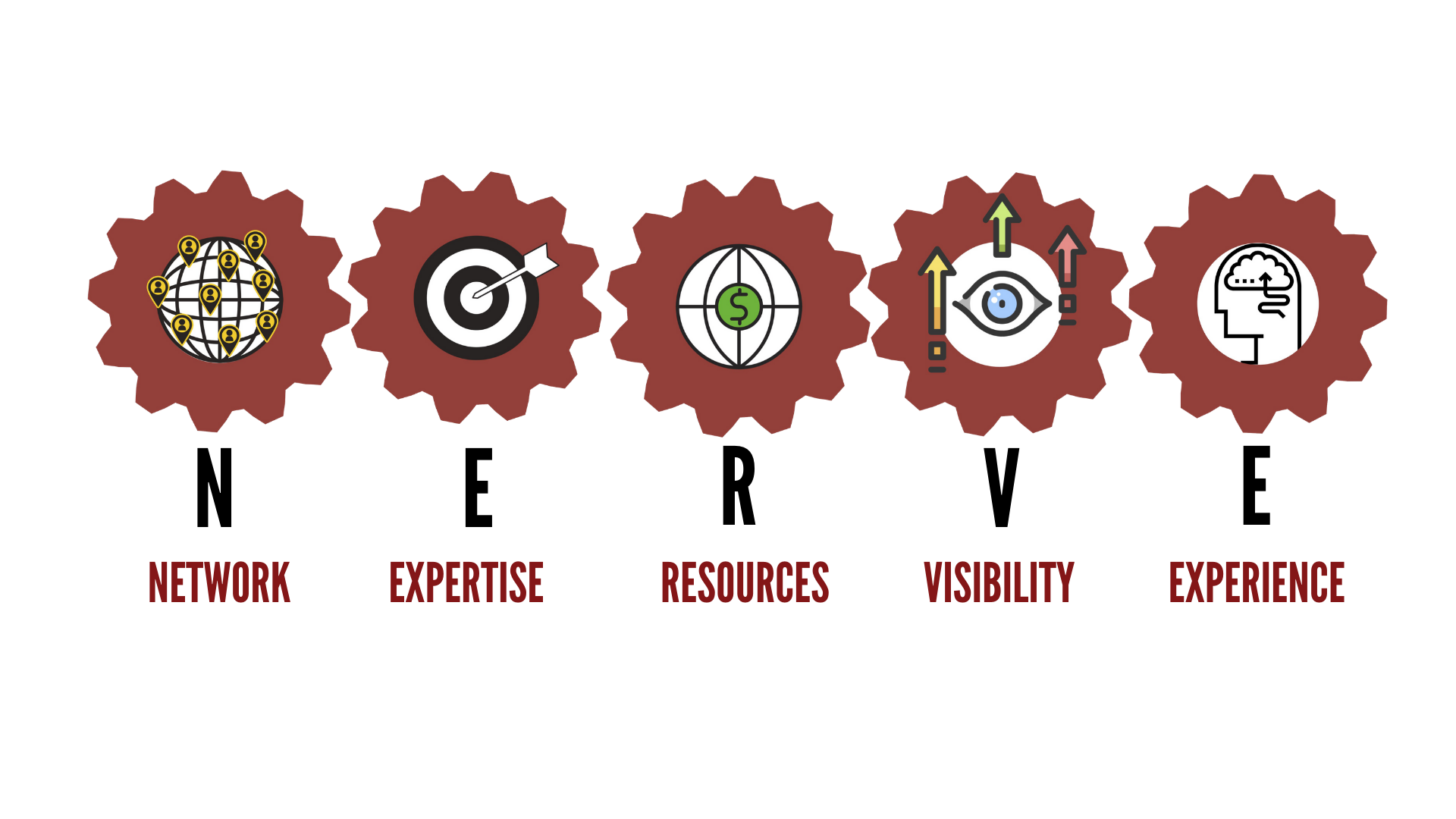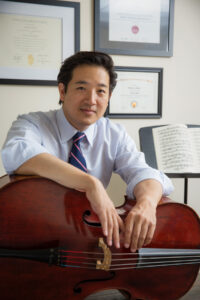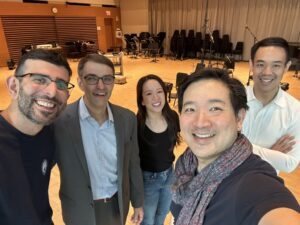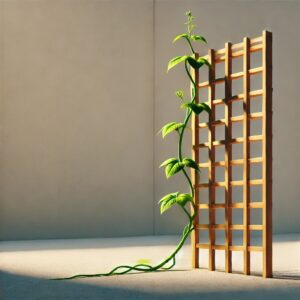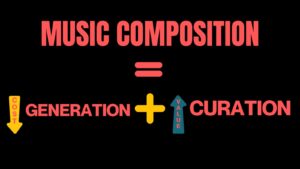I came up with the acronym/framework N.E.R.V.E. in 2018 when I was trying to figure out why I felt there was a similar shaped hole in all of the artistic proposals I was reading in my various positions sitting on panels of industry boards, accelerators, and competitions. “Build up the NERVE!” I’d say to my students.
NERVE as a framework
A career in the arts takes courage, takes audacity (I CAN do this, I WILL share my voice, I HAVE value to contribute), and takes a certain nerve.
Frameworks allow one to go through a process to ensure they have their bases covered, to ensure they don’t skip something valuable, to ensure we do not neglect something worthy of consideration. These five values, which are sometimes viewed as gears powering the engine of one’s project or career, are necessities that are undisputed by the captains of our industry.
As a professor and creator/leader of the International Arts Incubator at the University of Oklahoma, I found this framework helped my graduate students grasp an interlocking system of considerations — to have a more full picture in evaluating what might be missing or what an idea had in abundance. With one of undergraduate seminar classes replete with guest lecturers, I asked my students to think about everything they heard within the framework. (It is often easy for us to see what’s missing in a presentation or lecture — but it’s not so easy to see what is there. I will write more on this in a later post. Suffice it to say for now that NERVE helped them see what was there — and to ask the right questions in the Q/A Sessions afterward to improve upon their own learning.)
Network
Expertise
Resource
Visibility
Experience
What follows is a quick foray on each of these. Though I had devised the framework in 2018 and been teaching it in all my Arts Management and Entrepreneurship courses for the four years, I never did around to publishing content on it. I imagine I will revisit this and other research/lecture topics in a series of posts. Better late than never.
Network: do you have a network to achieve your goal? Every project needs people to help it sustain and grow. Though having and building a network may seem obvious, it is helpful to review at various points the strength, flexibility, and mutual understanding of one’s relationships (do we need to rejuvenate or strengthen existing bonds? where can our network expand its efficacy, influence, and reach?). As a boat unpaddled will move in the direction of a random current, taking regular stock of one’s Network helps us keep vigilant for meaningful connections.
Expertise: we all know we bring expertise to the table as artists and arts entrepreneurs. (Think of succinct compelling image: team play, the Spurs and how multiplying strengths makes for a great sum) But remembering the sum is greater than its parts, or that in audio recording, the quality of sound is only as good as its weakest part, ensuring one has access to the guidance or example of other types of expertise is essential.
Resource: money is important. We artists have both an aversion to discussing money (especially in negotiations) and a deep preoccupation with it (perhaps as a product of need). Money is incredibly powerful to various aspects of a project or career as it is what economics call a transferable utility. This means its use and function have more or less equal value for widely diverse parties. An illustration of how money has an outsized focus is the amount of foundation and agencies that primarily move monetary grants. These agencies vet applications on the basis that you present a compelling case for having achieved the other four values within NERVE. Think of how many times one applies for, say, a commissioning grant for a new composed work, with the need to build out the number of performances you expect to have, the partners you already have in place (Network), the biographical history you bring as an artist (Expertise and Experience ), the social media following you have (Visibility), and even other monetary sources of support you have brought to the table.
Thinking of Resource within the framework is helpful because a) it is always important to track one’s cash flows, b) it is equally important to identify other resources at one’s disposal. (There is a reason the word “resourceful” has such a captivating trait.) What else can one bring outside of money?
However, at the International Arts Incubator at the University of Oklahoma, a $10,000 prize awaits one lucky artist or group at the end, chosen by a leading group of experts called the Artrepreneurs. But the Lab has so many other values with regards to an interlocking system of support — from an ensemble residency being offered by the chief executive at a large organization to partnerships with an international record label.
Visibility: we’ve all heard the joke about the proverbial tree falling in the forest and whether anyone cares. Visibility in this framework works two ways: one needs the ability both to see and to be seen.
Experience: The value of not learning from other’s mistakes is irrefutable. This part of the framework allows one to assess whether there is any proxy example or person traveling the road before from which we might glean invaluable information and insight.
